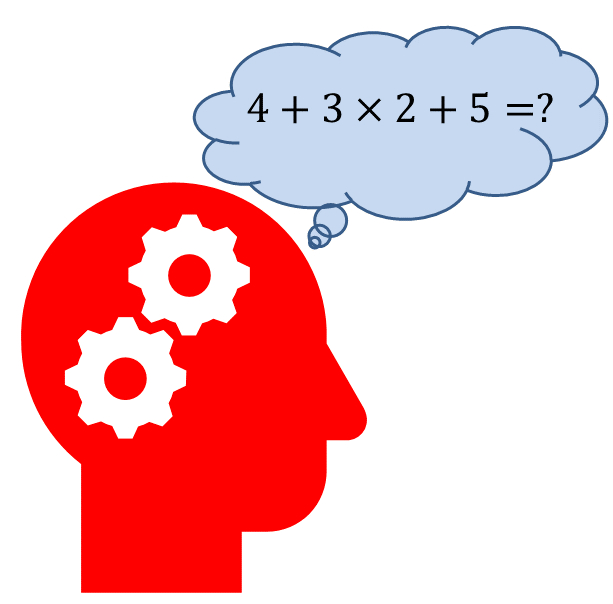M: Hi, this is Martin Lindsay from the Study and Learning Centre at RMIT University. This is a short movie on operations with algebra. First of all make sure you can tell the difference between like terms and unlike terms. Like terms contain exactly the same pro-numerals, in other words letters or variables, so look at the like terms down the left hand column and compare them with the unlike terms in the right hand column, in particular look at the last term, seven E F and eight F E, they are in fact like terms. Only like terms can be added or subtracted. For instance, in this example, seven E plus 10 E, the terms are alike, therefore they can be added to give you 17 E. But look at this one, be careful because here we have two terms, the X squared term and the X term so we have to add them separately, so three X squared minus X squared minus four X squared gives us minus two X squared, and two X, which is different to the X squared term must be left alone so the answer is minus two X squared plus two X.Similarly if you look at this example in red, there's a U V term which is the same as V U and that is different to the U term therefore that gives us minus two U V plus three U, we keep them separate, we can't add minus two U V to three U. And finally six R squared S minus two R S squared, they look similar but they are not the same, these are two unlike terms so we can't simplify this expression.Now before we move on to multiplying and dividing algebraic terms make sure you are familiar with the multiplication and dividing of positive and negative numbers on this slide. So study this carefully before moving onto the next slide.
But let's multiply some pro-numerals. Here's the first example, minus four times three B, multiply the numbers together, minus four and minus three gives you plus 12 and then just tag on the B afterwards so the answer is 12 B. Here's another one, multiply out the numbers first, three times minus 15 gives you minus 15, now multiply the pro-numeral, E and E squared is E cubed, so the answer is minus 15 E cubed.
The next example in red multiply out, as before, the numbers, minus two times minus four is plus eight, then the pro-numerals, there's a U squared term and there are Vs there, V times V is a V squared, so the answer is eight U squared V squared. Notice in these examples that because we're multiplying the actual terms can be different, so make sure you know the difference between adding and subtracting where the pro‑numerals must be exactly the same, multiplying and dividing the pro-numerals can be different.
Finally minus three P Q times minus two Q times P, multiply out the numbers, that gives you plus six, P times P is P squared, Q times Q is Q squared, so the answer is six P squared Q squared. Now in this slide we're dividing pro-numerals, so the first term minus 12 W Y Z divided by the second term three Y Z, express that as a fraction first and look for terms that will cancel top and bottom, in this case the Ys cancel top and bottom and the Zs cancel top and bottom, notice three will divide into 12 four times, so the answer is minus four W.
Here's another one slightly more complicated. Now in this slide we're dividing pro‑numerals, so the first term minus 12 W Y Z divided by the second term three Y Z, express that as a fraction first and look for terms that will cancel top and bottom, in this case the Ys cancel top and bottom and the Zs cancel top and bottom, notice three will divide into 12 four times so the answer is minus four W.
Here's another one slightly more complicated. Writing it as a fraction, minus two M squared N over six M N squared, and then in the third term I've expanded the M squared so it's M times N and then I've tacked the N on the end of that and I've done the same thing with the denominator with N squared N times N, so you can clearly see where the Ms and the Ns cancel, giving you an answer of minus M over three N. Notice minus on the top divided by plus on the bottom gives you an answer of minus.
And finally in blue there's a multiplication and a division so you again express that as a fraction, expand the A squared and then cancel top and bottom terms giving you an answer of two A. Now we'll move on to some slightly harder problems with algebra, but notice the rule that we use first of all, in other words if an expression has brackets in it that must be done first, secondly if there are indices you do that next, thirdly you do multiplying and dividing and lastly you do adding and subtraction.
So let's do some examples. Three S T minus three S times four T, notice we have a negative sign and a multiplication sign, so the times is worked out first, so three S times four T is 12 S T, notice now we have subtraction, three S T minus 12 S T, notice the terms are alike therefore we can subtract them, three minus 12 is minus nine S T.
Let's look at this one. We've got two terms in brackets and a division, so the brackets are worked out first, even though there's a plus inside the brackets must be worked out first, which gives us six X Y, then we divide that by two X, express that as a fraction, cancel any terms, Xs cancel here, twos go into six three times so the answer is three Y.
And finally look at this one. We have brackets, multiplication, addition and division. So the brackets is worked out first, that gives as minus 10 A squared B squared in the second line, then I write out the rest, plus two A cubed B cubed divided by A B, what do we do next, well we have division which becomes ... comes before addition, therefore we divide the two A cubed B cubed by A B, writing that as a fraction, simplifying by cancelling like terms and then in the final line we've just got two terms which we can add together. Notice again that the terms are exactly the same, A squared B squared, therefore we can add them, minus 10 plus two gives us minus eight A squared B squared.
Now try some questions for yourself. The answers to these questions are on the next slide. Thanks for watching this short video.




